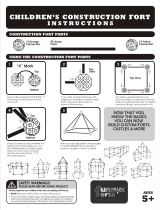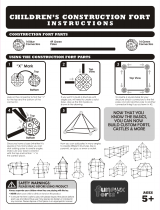
Welcome to the exciting world of special effects! This kit will show you
more than thirty mysterious phenomena – and then explain the science
behind these mysteries. When people don’t understand something, they
sometimes call it ‘magic.’ Yet frequently there are interesting scientific
explanations. With the special effects included here, you will be able to
amaze your family and friends – while learning science in the process.
The activities in this box are grouped according to the area of science in
which they belong. These categories are designated with symbols on the
bottom corner of each page and are as follows:
This kit contains most of the materials required to perform the activities
described. In addition, you will need the following common household
items: dollar bill, water, index card (or thick sheet of paper), toothpick,
two metal forks, cork, eraser (or raisins), scissors, baking soda, vinegar,
coins, paper clips, paper towel, thread, plastic bottle, glass bottle, a bit of
woolen cloth, a bowl, and belt. At the beginning of each experiment,
there is a list of the materials you need in order to do the activity. If you
don’t have something, it’s OK to go on to the next experiment. Have fun
and see you in pictures!
2
Floating Rings ...............................5
Mysterious Energy ..............................7
Pathfinder Ring.............................9
Flying Paper ................................11
Rolling Uphill ..............................13
Defying Gravity...........................15
Balancing Champion ..................17
Blowing a Kiss.............................19
Under Pressure............................21
Arrested Water ...........................23
Sticky Water ................................25
Bubble Up
...................................27
Hot Air Balloon...........................29
Make a Rainbow.........................31
A Vanishing Rainbow .................33
Floating Money...........................35
Changing Direction ....................37
Disappearing Image ...................39
Things on the Move ...................41
Red Alert .....................................43
A Pit Stop ....................................45
The Hole in Your Hand...............47
Hard Heads..................................49
Colors Change.............................51
Double Vision..............................53
Dark Clouds.................................55
The Ghost Submarine
.................57
A Tall Tale....................................59
Narrow Escape ............................61
Going in Circles...........................63
List of Special Effects and Experiments
Magnetism
and Electricity
Air PressurePhysics MathOptics Optical
Illusions

























